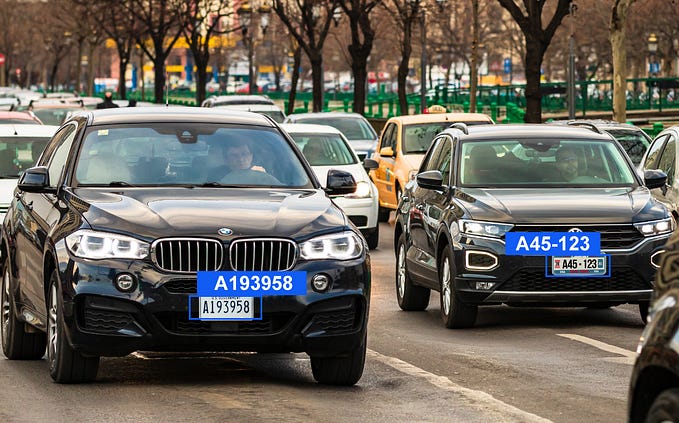Face Recognition Using Artificial Neural Network

Today, neural networks (NN) are revolutionizing business and everyday life, bringing us to the next level in artificial intelligence (AI).
What Are Neural Networks
- A branch of machine learning, neural networks (NN), also known as artificial neural networks (ANN), are computational models — essentially algorithms.
- Neural networks are a set of algorithms, they are designed to mimic the human brain, that is designed to recognize patterns.
- Every day, highly advanced artificial neural networks (ANNs) and deep learning (DL) algorithms scan through millions of queries and dig through the endless flow of big data. They are providing the knowledge required to fuel the many ever-evolving artificial intelligence (AI) that many software houses have incorporated in their products.
- By emulating the way interconnected brain cells function, NN-enabled machines (including the smartphones and computers that we use on a daily basis) are now trained to learn, recognize patterns, and make predictions in a humanoid fashion as well as solve problems in every business sector.
How Artificial Neural Networks Function
ANNs are statistical models designed to adapt and self-program by using learning algorithms in order to understand and sort out concepts, images, and photographs. For processors to do their work, developers arrange them in layers that operate in parallel.

- The input layer is analogous to the dendrites in the human brain’s neural network.
- The hidden layer is comparable to the cell body and sits between the input layer and output layer (which is akin to the synaptic outputs in the brain).
- The hidden layer is where artificial neurons take in a set of inputs based on synaptic weight, which is the amplitude or strength of a connection between nodes.
- These weighted inputs generate an output through a transfer function to the output layer.
Educating Artificial Neural Networks
For artificial neural networks to learn they require a mass of information.
This information is known as a training set.
If you wanted to teach your ANN to learn how to recognize a cat your training set would consist of thousands of images of a cat.
These images would all be tagged “cat”.
Once this information has been inputted and analyzed the network is considered trained.
From now on it will try to classify any future data based on what it thinks it is seeing.
So if you present it with a new image of a cat, it will identify the creature.
This process, deep learning, is what makes the network adaptive.
The network is able to learn and adapt as more information is processed.
🔰🔰Facial Recognition Using Neural Network🔰🔰
In the past few years, face recognition has received a significant attention and regarded as one of the most successful applications in the field of image analysis. Artificial neural networks (ANN) have been used in the field of image processing and pattern recognition.
A general face recognition system includes many steps: face detection; feature extraction; and face recognition. In the recent years, different architectures and models of ANN were used for face detection and recognition.

SOME REAL USE CASES OF FACE RECOGNITION
Technology companies have long been working toward developing reliable facial recognition software.
🔱⚜ FACEBOOK ⚜
Facebook is investing heavily in this area, not only within the organization, but also through the acquisitions of facial-recognition startups like Face.com (acquired in 2012 for a rumored $60M), Masquerade (acquired in 2016 for an undisclosed sum), and Faciometrics (acquired in 2016 for an undisclosed sum).

For a number of years now they have been using the facial recognition technology to auto-tag uploaded photographs.
They have also developed DeepFace.
In June 2016, Facebook announced a new Artificial Intelligence initiative that uses various deep neural networks such as DeepText — an artificial intelligence engine that can understand the textual content of thousands of posts per second, with near-human accuracy.
DeepFace
DeepFace is a form of facial recognition software-driven by Artificial Neural Networks. It is capable of mapping 3D facial features.
Once the mapping is complete the software turns the information into a flat model. The information is then filtered, highlighting distinctive facial elements.
To be able to do this DeepFace implements 120 million parameters. This technology hasn’t just emerged overnight.
DeepFace has been trained with a pool of 4.4 million tagged faces. These images were taken from 4,000 different Facebook accounts.
During the training process, tests were carried out presenting the system with side-by-side images. The system was then asked to identify if the images are of the same person.
In these tests, DeepFace returned an accuracy rating of 97.25%.
Human participants taking the same test scored, on average, 97.5%.
This is done with the purpose of allowing academics and researchers to assess and inspect the technology.
With all this work it’s little wonder that DeepFace may be the most accurate facial technology software yet developed.
🔱⚜ GOOGLE PHOTOS ⚜
Google Photos has had facial recognition technology for a few years now. With it, you can let Google scan your photo library to help identify and tag people who appear in your photos. If you set up face unlock on Android, you’re opting in to Google creating a digital map of your face.
Facial grouping in Google Photos is one of the most impressive features of the service. Not only can you see all pics and videos you’ve taken of a person or pet, you can also use that in search to find specific snaps like “me in Vienna” or “[person] and [other person/cat/dog]” or “[person] and food” for example.
But Google’s algorithms aren’t infallible and there are instances when you have to remove certain pics for wrong identification, or merge what it thinks are two different faces. Photos is aware of that and has been asking users on the web to help it improve its facial recognition.
🔱⚜ PAYING WITH YOUR FACE ⚜
Recently, the Macau district in China has introduced ATM’s that are capable of reading the user’s face. This negates the need for cards and pin numbers. If proved to be successful it could lead to the end of paying with plastic.

Meanwhile, companies such as Facefirst are developing software capable of identifying shoplifters.
When implemented this can cut loss to crime, saving money, and making stores safer. The company is also looking to roll out its systems at airports and other public areas.
🔱⚜ APPLE USES FACE ID TO UNLOCK IPHONE ⚜
Apple has also used facial data for the iPhone’s FaceID feature since 2018’s iPhone X.

Apple has tapped multiple neural networks for this feature, and it doesn’t shy away from discussing how secure Face ID is.
While Touch ID has a 1 in 50,000 chances that a random person could unlock the phone, Face ID brings that number up to a huge 1 in 1,000,000. The only thing that can easily foil the software, says Apple, is if you have an identical twin.
“Face ID is the future of how we unlock our smartphones and other devices and protect our sensitive information.”
CONCLUSION
The ANN is the very useful model and the ANN could be applied in problem-solving and machine learning. The computing World has a lot to gain from the Neural Network.
Face recognition is one such technology which has embraced AI successfully to increase the quality of our lives.








